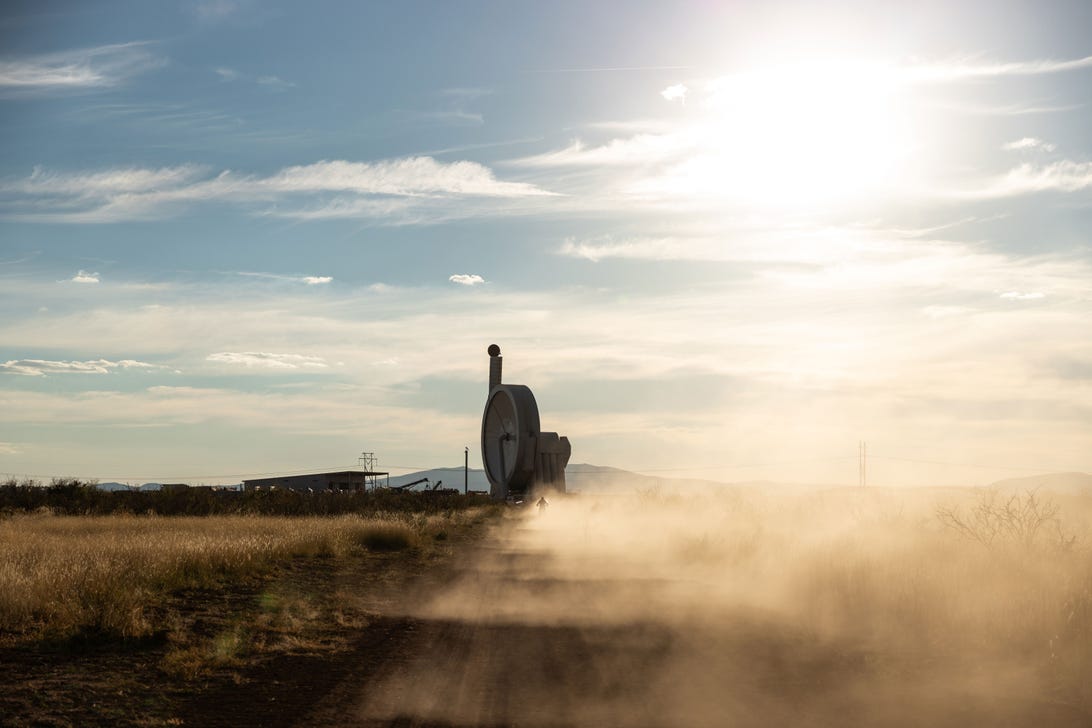

The SpinLaunch suborbital launch facility in New Mexico.
SpinLaunchOn the long, desolate road between Las Cruces, New Mexico, and the main terminal of Spaceport America over an hour to the north, a bizarre structure looking something like a huge yo-yo with a small smokestack can be seen rising out of the desert floor to the east.
But the spinning that happens at this facility run by California-based SpinLaunch takes place on the inside of what is really a steel vacuum chamber 300 feet (91 meters) in diameter. A payload attached to an internal carbon fiber arm is spun up to a speed of 5,000 miles per hour (8,000 kilometers per hour) before being released and fired out of the stack toward space.
The company completed its first public test of its suborbital mass accelerator in October and now NASA has signed up to try out the huge centrifugal slingshot later this year.
The space agency has signed a contract with SpinLaunch to fly and recover a payload as part of a developmental test flight that could lead to future launches.
"What started as an innovative idea to make space more accessible has materialized into a technically mature and game-changing approach to launch," founder and CEO Jonathan Yaney said in a statement last week.
SpinLaunch was founded in 2014 to develop an alternative to conventional rockets for reaching beyond Earth's atmosphere, which Yaney says it can do with less than 30 percent of the fuel and structures of a typical launch.
In case you're wondering, no, SpinLaunch will never be used to launch astronauts; the company's target market is less expensive and more readily available launches of small satellites.
The suborbital accelerator in New Mexico is just a beginning. The company also has plans to build a coastal orbital launch facility. To reach orbit, a payload would be launched from the same kind of facility three times the size of the one in New Mexico. After reaching the upper atmosphere, a small rocket engine would ignite to provide the extra push needed for orbital insertion.
The company hopes to perform its first orbital test flight as soon as 2025.









 Add Category
Add Category